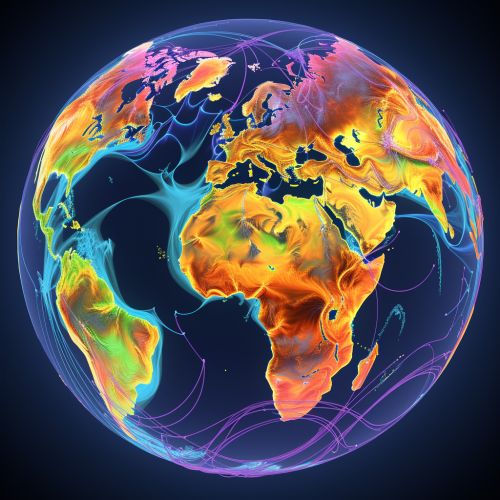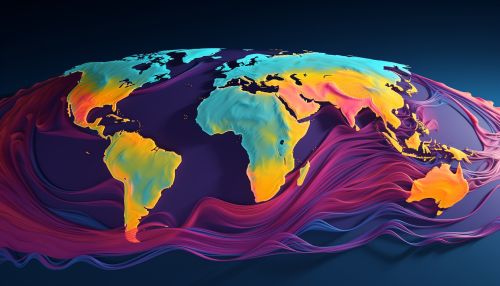General Circulation Models
Overview
General Circulation Models (GCMs) are a type of climate model that employs mathematical equations to represent physical processes. These models simulate the global circulation of the atmosphere, ocean, and interactions between them. They are used to understand and predict changes in the Earth's climate and weather patterns over time.


History
The development of GCMs began in the mid-20th century with the advent of computers. Early models were simple and only included a few physical processes. Over time, these models have become more sophisticated, incorporating more physical processes and increasing in resolution.
Structure and Components
GCMs are composed of several components, each representing a different part of the Earth system. These components include the atmosphere, ocean, land surface, and sea ice. Each component is represented by a set of differential equations based on the laws of physics, fluid motion, and chemistry. These equations are then solved numerically.
Atmosphere Component
The atmosphere component of a GCM represents the flow of air around the Earth. It includes processes such as radiation, convection, condensation and evaporation of water vapor, and the formation and movement of clouds.
Ocean Component
The ocean component of a GCM simulates the movement of water in the world's oceans. This includes currents, tides, and the exchange of heat and water with the atmosphere.
Land Surface Component
The land surface component of a GCM represents processes that occur on land, such as evaporation of water from soil and plants, and the flow of water into rivers.
Sea Ice Component
The sea ice component of a GCM represents the growth, melting, and movement of sea ice.
Coupling
In a GCM, the different components are coupled together, meaning they interact with each other. For example, the atmosphere component might calculate the amount of sunlight that is absorbed by the Earth's surface, which affects the temperature of the land and oceans.
Uses
GCMs are used for a variety of purposes. They are used in weather forecasting, in studies of climate change, and in research into the Earth's climate system.
Limitations
While GCMs are powerful tools, they also have limitations. They are based on approximations of the Earth's climate system, and there are many processes that are not fully understood or accurately represented.
Future Developments
Future developments in GCMs are likely to involve improvements in resolution, the inclusion of more physical processes, and better representations of the interactions between different parts of the Earth system.
